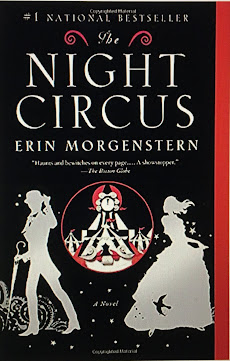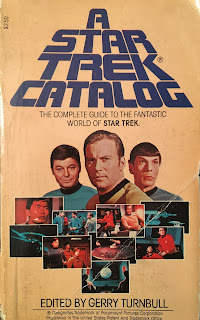Spotlight: Star Trek--The Autobiographies by Theresa Gauthier
The recent release of The Autobiography of Mr. Spock: The Life of a Federation Legend by Una McCormack, timed to (almost) coincide with the actual date of the 55th Anniversary of the premier of The Original Series, has revealed this latest in the Star Trek Autobiography Series to be, perhaps, the best of the series.
I had my worries about the book. I admit it. The book was announced with a release date of October 2018 with with author David A. Goodman. What followed was a series of postponements and an eventual switch to author Una McCormack. With each subsequent postponement, my heart sank. Spock had always been a favorite of mine. When I was a child I found him—fascinating. My greatest wish was that this book would be brilliant. My greatest fear was being disappointed.
Having just finished, and with a great deal of relief, I can say that it is, indeed, a noteworthy accomplishment. I’d argue that, of the four existing character autobiographies, (Kirk, Picard, Janeway, and Spock) this one could well be the best.
Author Una McCormack has managed to write in a way that captures Leonard Nimoy’s voice in every possible sense. I can hear Mr. Spock, I can feel Mr. Spock—my Mr. Spock, the original Mr. Spock—in every word.
At just 200 pages, it’s far shorter than I’d imagined it might be, and to be honest, there are gaps. I think there could have been another 100 pages and I would have loved every additional word. Star Trek IV: The Voyage Home warranted a mention but not a great deal of detail. This, while disappointing, made room for a great deal more of Saavik’s background, which was touched on in the novelization of Star Trek II: The Wrath of Khan. The closeness that developed between Saavik and Spock’s mother, Amanda, is a realistic detail that seems natural and correct.
This book veers from the straightforward autobiography format to something a little more alien. Spock tells his story in direct address to another Star Trek character, I won’t say who, and breaks the chapters up so that he discusses his relationships with particular people in each rather than in a chronological order as the previous books. This, according to Spock, is his attempt to write his t’san a’lat. This translates from Vulcan into Federation Standard as “wisdom book” and Spock admits that this format veers from the traditional, but it suits his story and his audience.
There’s a lot here that will be familiar to the die-hard fan. Large portions of it retell things we’ve all seen such as Spock’s storyline from Star Trek: Discovery and details from his mission to Romulus, but whereas Picard’s autobiography mentions details of he and Data meeting Spock, Spock focuses on other things.
Even his chapter on Kirk seems at odds with the strength of that relationship, but as he says, so much has been written about that what could he add? Given his Afterword in The Autobiography of James T. Kirk, I couldn’t agree more. It didn’t stop me wishing for more, of course.
McCormack may have kept this volume short, but her grasp of Spock, her ability to write in his voice, and her deep dive into his Romulan mission of reunification, made this one, more than any of the previous autobiographies, far more authentic in tone, in voice, in feel than any of the others.
Taken in connection with the other volumes, it suffers from a lack of continuity.
SPOILERS SPOILERS SPOILERS
The Autobiography of James T. Kirk: The Story of Starfleet’s Greatest Captain by David A. Goodman was a joy to read.
If Goodman had written the Spock book as was the original intent, I’m certain the continuity wouldn’t have been an issue. With the switch, there were a few discrepancies.
Goodman managed to dive into the familiar details of James T. Kirk’s live and still breathe new life into them. Yes, there’s a lot of repetition if you know the original stories by heart, but there’s also a lot of delicious new detail that makes the book well worth reading and rereading.
Yes, it could have been longer with more details that we loyal viewers don’t already know, but still, Goodman did a remarkable job integrating everything into the book. I can only imagine the fun of wading through all the episodes and movies and deciding what would be included and in how much detail.
Goodman then did something that surprised me, and to be honest I didn’t know how to take it when I first read it. It put me in a bit of a grumpy mood until I decided, logically, of course, just to accept it. In Goodman’s Kirk autobiography, the fifth Star Trek film, The Final Frontier, was relegated to fictional status as an actual movie released on one of the worlds the Enterprise crew encountered. None of the crew liked the film and there were comments made about how bad it was. When I read that, I admit I didn’t know how to take it. It seemed revisionist, it seemed counter intuitive to accept some of the films and some of the series as canon but to deny others. It didn’t sit right with me, and I do recall thinking to myself that this would cause continuity issues if future Star Trek authors were not made aware of the shift.
Herein, lies our biggest continuity issue. Una McCormack either didn’t know this or disregarded it (or perhaps was told to disregard it). In her book, Spock claims that the events of the fifth movie did happen. They’ve ping-ponged from canon to not canon to canon again.
Part of me finds this irritating, but in truth, it’s not enough to deter me from my enjoyment of either book.
The Autobiography of Jean-Luc Picard: One of Starfleet’s Most Inspirational Captains by David A. Goodman was another fun read. Jean-Luc’s past is, as Spock might say, fascinating. We know a bit from watching the series, but there’s a lot of filling in of details.
There is one little nit-picky error in the text in the early pages. There’s a footnote that is meant to expand on the survival through the years of Chateau Picard, but the note itself is identical to one in the early pages of Kirk’s autobiography and references instead the sale of property on which Kirk’s ancestral home is built from Isaac Cody (father of “Buffalo Bill” Cody) to one Franklin Kirk. The two notes are identical. I’m consumed with curiosity as to how this happened, but I’ll never know.
Jean-Luc, of course also mentions Wolf 359. Seeing this battle and the events leading up to it as well as it’s aftermath from his perspective is a reminder that the horrors of his encounter with the Lord never really left Picard. It haunts him for the rest of his life.
There’s a who’s who of characters all through the book, with Spock, Sulu, Phlox, and so many more, but I like best the details of Picard’s pre-Starfleet life and the details that are unique to the book and not derived from episodes of the series. The exploration of Beverly Crusher’s life with Jack Crusher leaps to mind as well. Knowing more of how these three characters met and how much they cared for each other adds a layer to the details we did already know. Picard’s relationship with Beverly Crusher cried out for exploration for the entire run of the series and into the films. Instead, we were treated to broad hints and disappointing relationships with other characters. Denied the onscreen chance we hoped for, looking at it through Picard’s eyes is satisfying and enlightening.
Another apparent set of continuity issue crops up, but this one is between Picard’s autobiography and the new Picard series. If you don’t want to read this before you read the book, stop reading now.
The first continuity issue here concerns a wedding towards the end of Picard’s book that hasn’t been hinted at in Picard. I’m not sure if that’s going to change, but I hope it does. I hope the wedding did take place. I like to think the bride is still in the picture in some way, but of course, that can’t really be so without a bit of retconning.
The book ends on a positive note, and I’m hoping the new series will as well whenever it does end. I’m also hoping for more appearances of old friends in the coming season. All in all, Picard’s autobiography is not to be missed.
The Autobiography of Captain Janeway: The Captain Who Went Further Than Any Had Before by Una McCormack
Captain Janeway’s life is a series of challenges and overachievements. Not content to just do something, Janeway
wants to be best at it, to embrace every part of it, and to excel in every way. Una McCormack has stepped right into the persona to allow readers an understanding of Janeway’s mindset from the beginning.
Growing up playing tennis, learning to dance, raising her dogs, and eventually following her father into Starfleet, every word of the story rings true. Her mother’s career as a writer, her sister excelling in art and other areas,
You can feel Janeway’s presence here as much as you feel the central characters of the other books in their autobiographies. The inclusion of the picture her artist sister created as a sort of touchstone that got her through the more difficult times in the Delata Quadrant was a heartwarming detail that made it clear how important family is to Kathryn Janeway.
The difficulties she faces are daunting, but she pushes through with determination and intuition playing equal parts in her journey. Being privy to her ruminations over her accomplishments from the creation of a holographic life form (the EMH), and helping a former Borg to learn about her humanity and individuality (Seven of Nine), and her unique relationship with Kes and Neelix, gives us a satisfying look at her thought processes. Even more so her thoughts at discovering that Samantha Wildman was pregnant. Knowing how she felt and what she was thinking at key moments during Voyager’s journey gives me, as a repeat viewer, more to look for in every episode.
I also loved getting to see Janeway meet Tuvok and seeing how their relationship progressed through the years.
Getting a look at her relationship with the revered groundskeeper of Starfleet Academy, Boothby, was also a detail I was overjoyed to see included. Boothby’s affect on her seemed deeper to me, more poignant than I’d have imagined. He’s become the sort of character you hope will be mentioned, and here, the author did him justice and then some.
Taken all together, these four books don’t always mesh. With so much in the way of reference materials, and with so many previous sources, authors, novels, hours and hours of television, it’s no wonder that some things might get confused or dropped. Continuity issues aside, however, they’re all worth reading. Though I do wish they were all a bit longer. It seems to me they could easily add more details, but then, that’s the sign of a good autobiography, isn’t it. When you finish reading it, you always wish for more.










Comments
Post a Comment